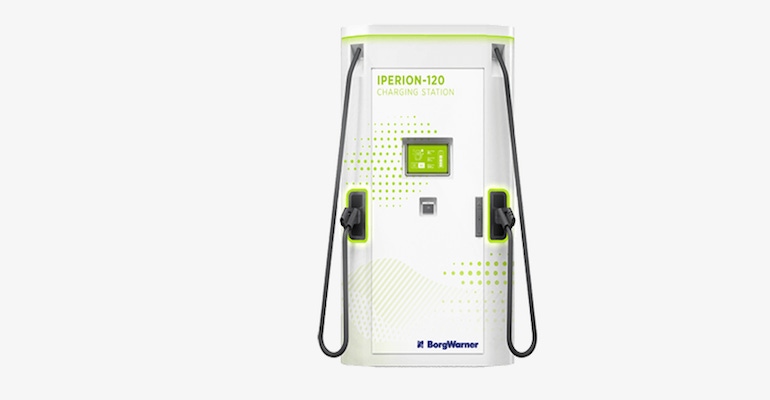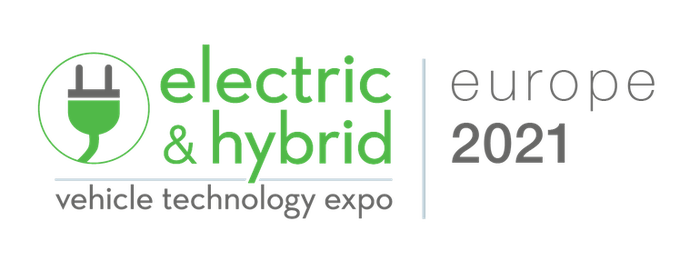We interview Davide Spazian from BorgWarner who will be presenting at a technical session at The Battery Show Europe.
November 22, 2021

Battery Technology Staff
The Battery Show Europe and Electric & Hybrid Vehicle Technology Expo Europe will take place in Stuttgart, Germany from November 30th through December 2nd, 2021. Among the many Technical Session presentations will be one titled “Developing Fast Charging Stations for Hybrid and Electric Vehicles” by Davide Spazian from BorgWarner Systems Lugo Srl in Italy.
DC Fast Charging (DCFC) is one of the key technologies that are helping to promote the acceptance of electric vehicles (EV). The ability to rapidly charge an EV battery, adding many kilometers of range over a short period makes long-distance travel with an EV possible. BorgWarner has developed a solution for DC Fast Charge, capable of charging two vehicles simultaneously at 60 kilowatts (kW) or one at 120kW, without the need to reconfigure the unit. With an output voltage range from 200 Vdc to up to 900Vdc, it enables the charging of any vehicle size and future generation batteries.
Battery Technology interviewed Davide Spazian to learn more about BorgWarner’s charging and his upcoming presentation.

Davide Spazian
Battery Technology: Davide, who are you, and what do you do at BorgWarner?
Davide Spazian: My name is Davide Spazian, I work in BorgWarner as Charging Account Manager. I’m in this role for 1 year.
BT: Has your career been spent working only on EV technologies, or have you worked in other technology fields?
DS: I have a degree in Nuclear Physics, I’ve worked in companies that belong to the renewable market and industrial applications.
BT: DC Fast Charging has become the key to acceptance of EVs—Even though most people charge at home, the perception is that they need to be able to change on the go. How realistic is this expectation and aside from long trips is it really important to have as many DC fast chargers as traditional gasoline stations?
DS: The possibility to charge at home for the people would play an important role in EV adoption, but this would not be in contrast with the spread of high-power charging solutions.
First of all, it’s not implicit that all of the BEV users would be able to reach out to a low-power charging point at home, every day, especially in the big cities.
Then, it’s important to consider that the demand for high charging power solutions would be increasing also because of the electrification of more and more vehicles, with different capabilities in terms of charging speed. A fast charging solution for a passenger car would be considered a relatively slow charging for more power demanding vehicles like medium and long haul trucks.
Finally, it’s necessary to understand that people will change their approach to recharging, by moving to a one-shot fuel refilling approach, to an opportunity charging, when a charging point is available. Again, the speed of charging would be a key point for this transition.
BT: Although there have been many studies that say the present grid is adequate for EV charging, the general public is being constantly told that the grid can’t support EVs. Can you talk about this a bit?
DS: I don’t believe that the grid wouldn’t be able to support the EVs, the percentage of the power required would be not so high with respect to the total demand of power.
In terms of capacity, considerable energy from renewable sources could be better used and recovered with local storage solutions. I believe it is really a matter of finding a way to maximize the use of green energy that is currently produced, getting more local storage solutions, and expanding V2G to keep the grid stable.
BT: Installing several DC fast chargers at one location, that run at the same time will require a lot of energy throughput. Are there special considerations for cooling or temporary storage at charging stations that should be considered?
DS: As I said, temporary storage and V2G would play an important role in reducing the peak power absorption from the grid. At BorgWarner, we are considering several improvements to be developed focused on optimizing the energy delivery up to the vehicle, including local storage.
BT: Can you give a brief description of what your talk will be on and what it will cover?
DS: My presentation is focused to present BorgWarner as a company, to describe our new company strategy called Charging Forward and our focus on accelerating electrification in order to deliver innovative and sustainable solutions for the global vehicle market.
Then, I will discuss the solution for the high power charging that BorgWarner is going to put on the market next year, explaining the reasoning behind this decision and defining which would be the next steps for the future.
Davide Spazian’s presentation “Developing Fast Charging Stations for Hybrid and Electric Vehicles” will take place on Wednesday, December 1st from 4:00 to 4:30 pm at The Battery Show Europe and Electric & Hybrid Vehicle Technology Expo Europe. More information, including registration for the event, can be found here.


You May Also Like



